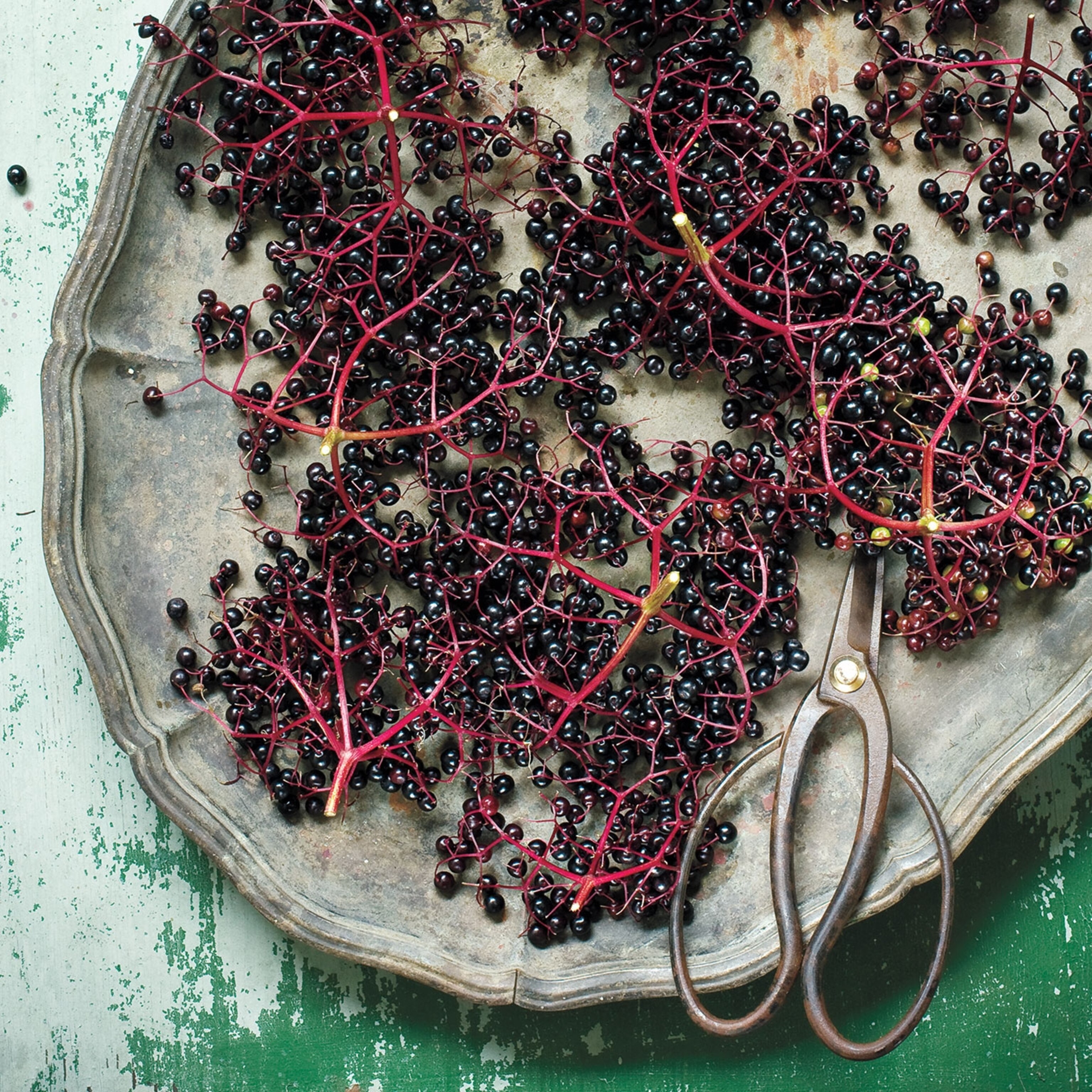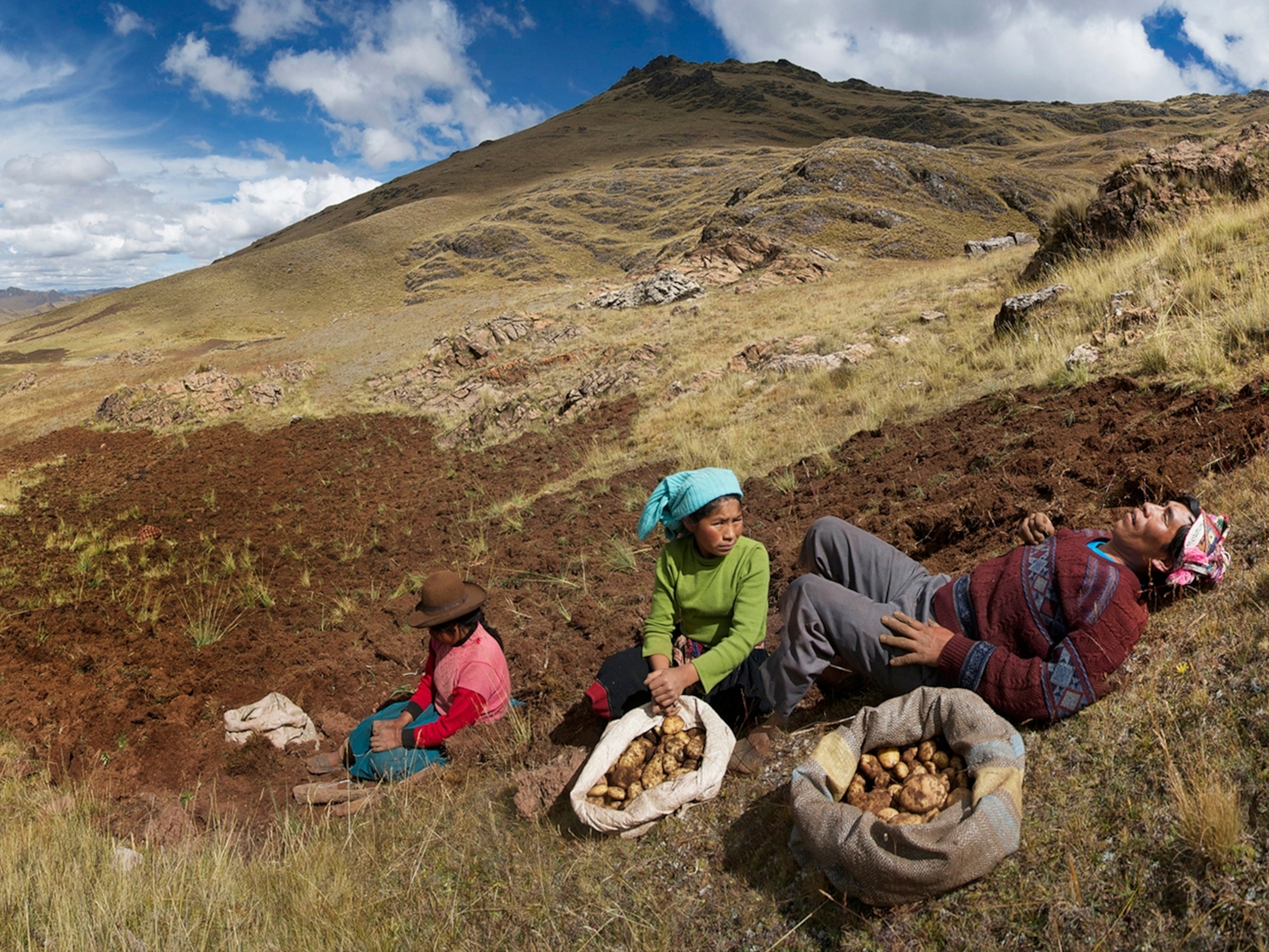
Finding the Faces of Farming: Grains and Groundnuts
Photographing the farmers of the world might seem like a simple assignment. But then there is the matter of finding them. In several continents. And catching them all at the right time, when their fields are verdant and lush. In this second post, Jim Richardson leaves the potato farmers of the Andes and heads to Asia, Africa, Europe, and then back to North America, meeting those who just might make it possible to feed the nine billion people projected to inhabit the planet by 2050.
For rice I went to Bangladesh, slogging through flooded fields with mud that will suck your shoes off, where the humidity in the vast watery lowlands left me drenched.
Tim Russell with IRRI (International Rice Research Institute) took me to Jahati where village farmers were threshing rice with a foot-powered contraption, beating the rice off the stalks. Three men pumped in unison, whacking bundles of rice against the spinning drum. American farmers seeing this would feel smug until learning that acre for acre, farmers in Bangladesh grow more food than farmers in Illinois.
It was not always so.

Back in the 50’s and 60’s famine stalked the planet. Bangladesh along with China and India were familiar to every American child, as places where starving millions would be glad for any scrap of food left on our dinner plate. As a boy on the farm, I knew our Kansas wheat was feeding the planet.
Out of that fear came the CGIAR (Consultative Group on International Agriculture Research) centers (which includes IRRI and 14 others) to improve world food production. And out of that ferment came Norman Borlaug, an Iowa farm boy and biologist who won the Nobel Peace Prize for saving a billion people from starvation, to put it bluntly. His great insight was that world rice production could be increased by skillful cross-breeding, to put it far too simply.
Borlaug prevailed where others in the era saw doom. Paul Ehrlich wrote in his 1968 bestseller The Population Bomb, “The battle to feed all of humanity is over.” He foresaw hundreds of millions of people starving.
They didn’t starve.

Thanks to Borlaug’s work grain production soared. Among the miracle stories was that by 1974 India was self-sufficient in grain production. Around the world the story was repeated as the legendary Green Revolution spread. The world dodged the dreaded “population bomb.”
Tim pointed out that right there in that rice field I was standing in the middle of Borlaug’s Green Revolution. That work is carried on today by the Tim Russells of the world, suchlike career agronomists and researchers who toil in relative obscurity on the knotty problems of agriculture. Like most of them Tim’s resume is clogged with farm program acronyms. But behind all those tedious acronyms are real people who toil in the fields and live serial lives in third world countries.
Finishing up, Muhammed Rahman hoisted an incredibly heavy bag of wet rice onto his head and headed back to the village where it could be dried. I stopped him for a moment to take a picture (feeling guilty while he struggled under the weight.)
It occurred to me that I could take his picture because his parents didn’t die in a great famine. They were some of the billion saved by the Green Revolution. Can we do it again?
(And the rice in the bag? A new variety developed by IRRI which can lie wet for 40 days without sprouting. It can be harvested in the rain, which was good because I could see more coming across the field just now.)

Such moments were repeated for me around the world. Under a tree in Mali I sat with women picking groundnuts (peanuts) out of dusty roots. They sang, they gossiped, and had great fun with the American photographer. Soumja Traore set a bowl of nuts on her head, I took her picture, she smiled, they laughed. I could have stayed there all day. But Agathe Diama with ICRISAT (International Crop Research Institute for Semi-Arid Tropics) was urging me on. Seriba Dembele was waiting for us down the road, proud of his great sorghum crop. (An ICRISAT variety developed to help dryland farmers.)
In Ukraine Olexandra Salo boasted of her huge cabbages and flashed her jolly smile. In Ethiopia I met Shewakena Wube winnowing wheat, straw drifting in the breeze on the high hill where I could see thousands of tiny farms in the valley below. How different than when I met Scott Dowling in South Dakota, who has one farm of 50,000 acres. (That one monster American farm might make 8,000 farms in Ethiopia.)

Little by little as I traveled the globe, collecting portraits of the world’s farmers, a picture emerged for me, of the incredibly diverse family of farmers who grow our food—a picture that defied generalization. For every time that I met a Scott Dowling (who grew 1.3 million bushels of wheat recently), I also met someone like Dadong Angga, who I found out in a rice field in Bali, gleaning rice, eking out a few grains of rice after the threshers had finished their work. If she was lucky that day she might take home one bowl of rice.

There was a time when I might have thought there was a magic bullet answer to feeding our planet; one technology or way of farming that would solve everything. No longer. I’m over that particular sort of agricultural myopia. We’ll need all of the farmers and every last bit of knowledge they’ve got.
Perhaps if there is an answer it lies with those folks I traveled with on this journey, those unsung agricultural agents I called on over and over, the people who actually got me into the fields in front of farmers. I say this not because they were so kind to me (which they were) but because they so obviously know farmers and have the knowledge that just may save us.
You will not see their pictures here, and that’s a pity. They were behind the camera, with me, everywhere.
With the help of the Consultative Group on International Agriculture Research (CGIAR) and many other agencies and agricultural experts, Jim Richardson was able to locate farmers around the globe for "The Faces of Farming", a series of portraits appearing in the May 2014 issue. This story is part of National Geographic‘s special eight-month "Future of Food" series.
Related Topics
You May Also Like
Go Further
Animals
- Octopuses have a lot of secrets. Can you guess 8 of them?
- Animals
- Feature
Octopuses have a lot of secrets. Can you guess 8 of them? - This biologist and her rescue dog help protect bears in the AndesThis biologist and her rescue dog help protect bears in the Andes
- An octopus invited this writer into her tank—and her secret worldAn octopus invited this writer into her tank—and her secret world
- Peace-loving bonobos are more aggressive than we thoughtPeace-loving bonobos are more aggressive than we thought
Environment
- Listen to 30 years of climate change transformed into haunting musicListen to 30 years of climate change transformed into haunting music
- This ancient society tried to stop El Niño—with child sacrificeThis ancient society tried to stop El Niño—with child sacrifice
- U.S. plans to clean its drinking water. What does that mean?U.S. plans to clean its drinking water. What does that mean?
- Food systems: supporting the triangle of food security, Video Story
- Paid Content
Food systems: supporting the triangle of food security - Will we ever solve the mystery of the Mima mounds?Will we ever solve the mystery of the Mima mounds?
History & Culture
- Strange clues in a Maya temple reveal a fiery political dramaStrange clues in a Maya temple reveal a fiery political drama
- How technology is revealing secrets in these ancient scrollsHow technology is revealing secrets in these ancient scrolls
- Pilgrimages aren’t just spiritual anymore. They’re a workout.Pilgrimages aren’t just spiritual anymore. They’re a workout.
- This ancient society tried to stop El Niño—with child sacrificeThis ancient society tried to stop El Niño—with child sacrifice
- This ancient cure was just revived in a lab. Does it work?This ancient cure was just revived in a lab. Does it work?
Science
- The unexpected health benefits of Ozempic and MounjaroThe unexpected health benefits of Ozempic and Mounjaro
- Do you have an inner monologue? Here’s what it reveals about you.Do you have an inner monologue? Here’s what it reveals about you.
- Jupiter’s volcanic moon Io has been erupting for billions of yearsJupiter’s volcanic moon Io has been erupting for billions of years
- This 80-foot-long sea monster was the killer whale of its timeThis 80-foot-long sea monster was the killer whale of its time
Travel
- How to plan an epic summer trip to a national parkHow to plan an epic summer trip to a national park
- This town is the Alps' first European Capital of CultureThis town is the Alps' first European Capital of Culture
- This royal city lies in the shadow of Kuala LumpurThis royal city lies in the shadow of Kuala Lumpur
- This author tells the story of crypto-trading Mongolian nomadsThis author tells the story of crypto-trading Mongolian nomads






